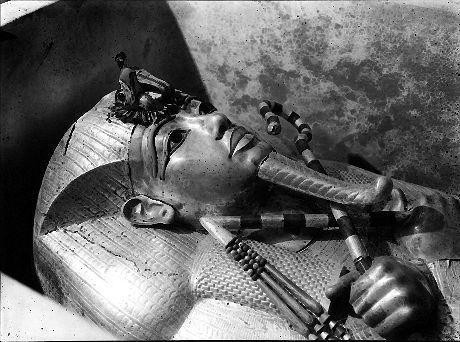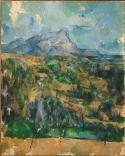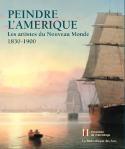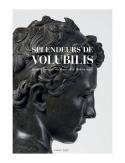Art Of The Day Weekly
#354 - from 10 July 2014 to 10 September 2014

The outermost gilded wooden coffin of the mummy of Tutankhamun. Photo by Harry Burton, 1922. © Griffith Institute, University of Oxford (exhibition at the Ashmolean Museum, Oxford).
Our next issue will appear on 11 September 2014. Have a wonderful Summer!
IN THE AIR
Summer with Tutankhamun
OXFORD – “Nostalgia is no longer what it used to be”, Simone Signoret had written. She was undoubtedly wrong! Historical references and new versions of mythical exhibitions are more than ever in fashion. We can see this at the Centre Pompidou with the return of the wonderful “Magicians of the earth” which met with such success 25 years ago. We will be further convinced of this in September with the retrospective the Marmottan museum is preparing around Monet’s seminal painting, Impression soleil levant. We can see it even more so at the Ashmolean Museum, where the unimaginable mysteries of the discovery of Tutankhamun are once again in the spotlight. The saga of the archaeologists who became famous between 1914 and 1922 in the Valley of Kings, directed by Lord Carnarvon and Howard Carter – who arrived in Egypt at the age of 17 to copy frescoes – has us all breathless with its mysteries and curses. The exhibit borrowed from the rich collections of the Griffith Institute and brings together objects from the Amarna period, archives on the diggings never shown before, photos Harry Burton took exclusively for the Times of London, as well as objects that testify of the Tutankhamun fever of the 1920s (jewels, clothes, advertising, etc.).
• Discovering Tut at the Ashmolean Museum, from 24 July to 2 November 2014.
EXHIBITIONS
Pearlman's Cézannes
AIX-EN-PROVENCE – We all know the wonderful American collections of French art, such as Barnes, Kress, Getty or Norton Simon. After discovering the Hays collection at the Orsay museum last year, here we have another rediscovery, the works collected by Henry Pearlman (1895-1974), the founder of the Eastern Cold Storage Company. He had a true passion for Cézanne and owned 33 works by the artist, but not only. He also had works by Soutine –one of is first purchases-, Van Gogh –among them La diligence à Tarascon-, Gauguin and Toulouse-Lautrec. Since 1976 they have been kept at Princeton and are now partially exhibited at the musée Granet. Following the exhibitions on the Planque and Burda collections, the institution wishes to specialise in presenting major private collections.
• Chefs-d’œuvre de la collection Pearlman. Cézanne et la modernité at the Granet museum, from 12 July to 5 October 2014.

Jan Baptist van der Hulst (1790 – 1862), William II, Anna Pavlovna and their four children in front of the Tervuren Palace in Brussels, 1826, oil on wood, © La Haye, House of Orange-Nassau Historic Collections Trust.
The dream of William and Anna
LUXEMBOURG – We know quite a few of the great collections from principalities, such as those of the Farnese, the Este, the Lichtenstein or the Esterhazy. But who has ever mentioned the one gathered during the first half of XIXth century by William II of the Netherlands and his Russian wife Anna Pavlovna, the sister of Alexander I (the same one who defeated Napoleon)? Yet this collection was sumptuous, and included works by Sebastiano del Piombo, Guido Reni, Memling, Van Dyck, Rubens and a few absolute art masterpieces such as The Annunciation by Jan van Eyck (which today is at the National Gallery in Washington) or the Portrait of Titus by Rembrandt (today at the Wallace Collection, London). The collection was scattered at an auction when William died and it ended up in the great museums of the world, among which the Hermitage. The current exhibition is the result of long, patient work to identify and return – temporarily – a lost unit.
• Une passion royale pour l’art at Villa Vauban, from 12 July to 12 October 2014.

Véronèse, The Feast in the House of Levi (after restauration), Venice, Gallerie dell’Accademia, entrusted to the Municipality of Verona.
Veronese home again
VERONA - After its first stop in London at the National Gallery, the great Veronese retrospective (1528-1588) is now back home. This is the most important monograph since the one held in Venice in 1939, on the eve of World War II. While his name may give away his origins, Veronese actually met all his successes in Venice, where he settled at the age of 27. But his training, in the workshops of the painter Caroto and the architect Sanmicheli, did take place in Verona, his native town. It is closely studied in the first part of the exhibition. A stay in the region of Veneto could lead to a “Veronese itinerary”, to Villa Maser for example or to the Gallerie dell’Accademia in Venice. It would also justify, in Verona itself, a visit to Juliet’s Tomb, a true tourist attraction. But the venue is also the museum of the Cavalcaselle frescoes. It is here that the painting The Feast in the House of Levi, one of the many paintings of Biblical banquets the artist left, was restored “directly”. It has been freed from its varnish and found its original blue tainted colours.
• Veronese, l’illusione della realtà at Palazzo della Gran Guardia, from 5 July to 5 October 2014.
SUMMER READINGS
The Centre Pompidou is contemporary
In other times, museums never touched their permanent collection, and were content to add new purchases, one at a time. This has changed in contemporary art and we are closer to the concept of hanging their works like in galleries. This is the case in particular at the Centre Pompidou: it fishes in its bottomless collection and renews the presentation of the musée national d’Art moderne every twelve or eighteen months. The aim is to offer new points of view, to help new artists and new situations rise, in line with our times. The presentation focuses on the last thirty years and will be inaugurated on 2 July 2014, under the title “Une histoire” (A story). It groups together 200 artists and sums up a phase of major upheavals with the breakthrough of new technologies, globalisation, exaggerated nomadism, the weight of geopolitics with the fall of the Berlin Wall. From Marina Abramovic to Zhang Huan, including Zineb Sedira and Regina Galindo, we find a few known names but most of all we see new centers such as China, the Middle East or Latin America take their place.
• Une histoire. Art, architecture et design, directed by Christine Macel, Flamarion/Centre Pompidou, 2014, €39.90.
Another side of the USA
American artists such as Basquiat and Warhol, and it if we go further back in time, Pollock, Motherwell or Hopper are household names to an European audience. But what about before them? Maybe Audubon, whom the French continue to consider theirs, and Catlin, still ring a bell, somehow. But certainly not Peto and his trompe-l’œil, Moran and his Grand Canyon, nor Sonntag with his views of Vermont. This book accompanied the exhibition at the Hermitage Foundation, and is a way of introduction to this unknown school, halfway between Indian ethnology, landscaping and reporting on a country under construction.
• Peindre l’Amérique. Les artistes du Nouveau Monde 1830-1900, La Bibliothèque des Arts, 2014, 186 p., 49 €.
Aiming for the Pacific
Summer goes hand in hand with daydreaming. The musée du quai Branly wisely surfs on this appetite with its exhibition on the Tiki Pop aesthetics, inspired by the culture of Oceania and Polynesia. The catalogue is richly illustrated and allows us to extend the visit, and measure to what point the myth of Hawai and the islands of the Pacific has filtered into a whole side of the visual and musical culture of the XXth century. Tiki Pop was first caused in part by the war and the stationing of US Marines in Guam and in the Solomon Islands; was then relayed by best-sellers such as Tales of the South Pacific by James Michener and by Hollywood productions. This cult was reincarnated in diners, bowling alleys, motels, gas stations and private villas. The fashion was largely ignored in France, but now it finally has its bible!
• Tiki Pop, by Sven A. Kirsten, Taschen, 2014, 384 p., €39.99
Morocco, year zero
Morocco is above all Marrakech, the medina of Fes and its palaces, the fortifications of Ouarzazate, the mosques and zelliges, as we shall soon see in a major exhibition at the Louvre. But Morocco also has a part of its culture inherited from the Greeks and Romans. Volubilis, near Meknès, keeps moving remains from the time of Christ, when Juba II reigned as King of Mauretania, associated and not enslaved to Rome. The villas overflowed at the time with columns, fountains and lavish mosaics. The book, which accompanies an exhibition at the MuCEM in Marseille, gives a good view of exceptional bronzes (national treasures in Morocco) that could ornate the Moroccan palaces two thousand years ago.
• Splendeurs de Volubilis, Actes Sud, 2014, 190 p., €35.






